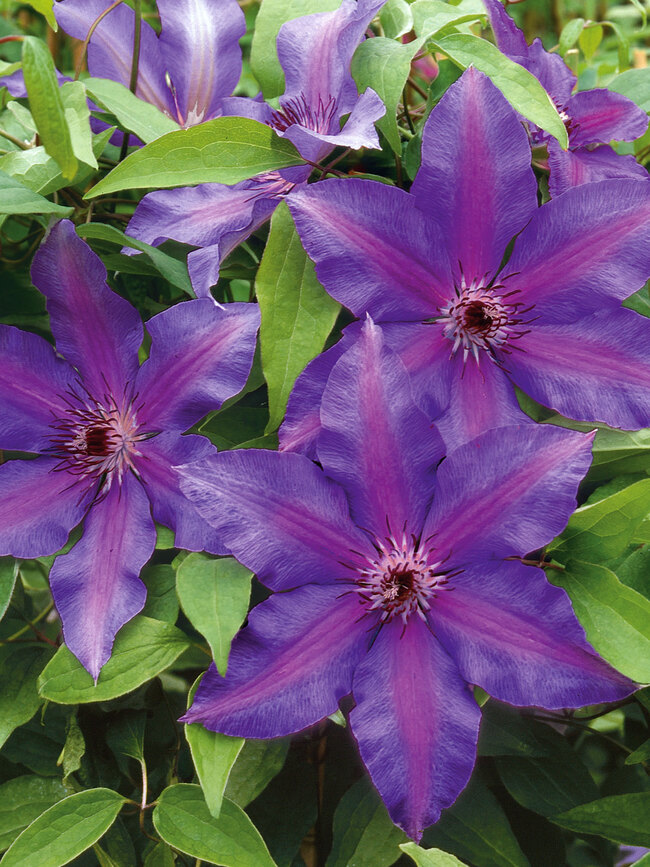
Clematis is a beautiful flowering vine that can add color and elegance to your garden. Here's a guide on how to grow clematis:
Select the right clematis variety: There are various types of clematis, including large-flowered, small-flowered, and evergreen varieties. Research the different varieties to choose the one that suits your preferences and growing conditions.
Choose a suitable planting location: Clematis prefers a sunny location with at least 6 hours of direct sunlight each day. However, they also appreciate some shade on their roots, so consider planting low-growing perennials or placing a layer of mulch around the base of the plant to provide shade. Ensure the soil is well-draining and rich in organic matter.
Planting: Dig a hole that is wider and deeper than the root ball of the clematis. Place the plant in the hole, making sure the top of the root ball is level with or slightly below the soil surface. Backfill the hole with soil and gently firm it around the plant. Space multiple clematis plants according to the specific variety and their mature size.
Watering: Keep the soil consistently moist, especially during the plant's active growth period. Water deeply, ensuring that the water reaches the root system. Avoid overwatering or letting the soil become waterlogged, as this can lead to root rot. Mulching around the base of the plant can help retain moisture and regulate soil temperature.
Support: Clematis is a climbing vine and requires some form of support to grow properly. Install a trellis, arbor, or other climbing structure near the plant at the time of planting. Make sure the support is sturdy enough to accommodate the mature size and weight of the clematis.
Pruning: Pruning requirements vary depending on the clematis group. Group 1 clematis (early-flowering) requires minimal pruning and can be pruned lightly after flowering to maintain its shape. Group 2 clematis (large-flowered) blooms on old and new wood, so they can be pruned lightly after the first flush of flowers and then more heavily in early spring. Group 3 clematis (late-flowering) blooms on new wood, so they can be pruned back hard in early spring.
Fertilization: Clematis generally benefit from regular fertilization. Apply a balanced, slow-release fertilizer in early spring before new growth appears. Follow the package instructions for the recommended application rate. Additionally, you can provide supplemental feeding with a liquid fertilizer during the growing season to promote healthy growth and abundant blooms.
Mulching: Mulching around the base of the plant helps to retain moisture, suppress weeds, and insulate the roots. Use a layer of organic mulch, such as wood chips or compost, and spread it evenly around the plant, leaving a small space around the stem to prevent stem rot.
Pests and diseases: Clematis can be susceptible to pests such as aphids, slugs, and snails. Monitor your plants regularly and take appropriate measures if any pests are observed. Clematis can also be affected by diseases such as powdery mildew or leaf spot. Providing good air circulation, avoiding overhead watering, and removing any infected plant material can help prevent these issues.
By following these guidelines, you can successfully grow clematis and enjoy their stunning flowers climbing and cascading in your garden. Remember to check the specific care requirements for the particular variety of clematis you are growing, as different types may have slight variations in their needs.

No comments:
Post a Comment